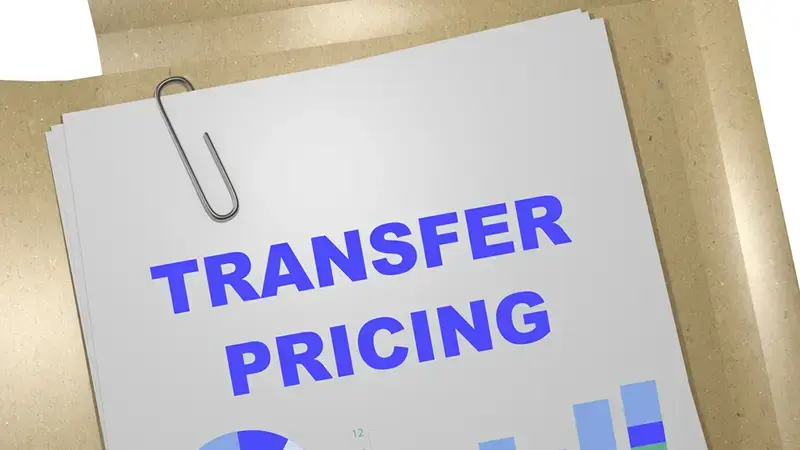Operational Transfer Pricing: Best Practices for Multinational Success
Operational transfer pricing is a cornerstone for ensuring compliance, fairness, and efficiency in intercompany transactions for goods and services...
9 min read
 H&CO
Dec 20, 2024 10:29:47 AM
H&CO
Dec 20, 2024 10:29:47 AM

For global companies, matching intercompany transactions and pricing to the value created within their operations is key to both compliance and cost savings. Transfer pricing value chain analysis is the key to this alignment by showing where value is being created and distributed across the global supply chain.
In this article we look at the value chain analysis process, and why it’s important for compliance with international tax laws, reducing risk, and increasing operational efficiency. We also provide practical tips to help you match your intercompany pricing to true economic value and drive growth and global tax efficiency. Additionally, we will discuss intercompany pricing policies and their impact on business value.
Quick Summary
|
CONTENT INDEX
Transfer pricing is the pricing of goods, services, or intangible assets between related entities within a multinational corporation (MNC). Intercompany transactions are subject to tax authority scrutiny to ensure they comply with the arm's length principle which states that the price of such transactions should be the same as what independent entities would agree upon in similar circumstances.
Multinational corporations can allocate profits and costs to different countries and therefore impact their overall tax bill. Following OECD transfer pricing guidelines is key to making sure transfer pricing methods reflect the actual economic activities and risks undertaken by the entities involved. Intercompany pricing policies are crucial in this process to ensure the prices for intercompany transactions are in line with market and regulatory requirements.
In the end transfer pricing is not just about setting prices for tax purposes; it’s about matching intercompany pricing to the true economic value created by each entity. By doing so companies can prevent profit shifting, comply with international tax regulations, and optimize their financial performance.
Value chain analysis (VCA) is a powerful tool to help you understand how your business creates economic value. Introduced by Michael Porter, the concept of a value chain is a sequence of activities that transform a product or service from concept to delivery. In the context of a global supply chain, analyzing these activities will help you identify areas to improve, increase operational efficiency, and get a competitive advantage.
VCA aims to get a competitive advantage by increasing productivity while managing costs. This means evaluating both primary activities like production and marketing and support activities like human resources and technology development. Identifying areas of inefficiency and proposing optimization will boost overall performance.
Formalizing this process allows companies to align their operations with their strategic goals, optimize value-creation activities, and get a competitive advantage in the market. This alignment is key in transfer pricing as it ensures intercompany pricing reflects the true economic value created by each entity.
Aligning transfer pricing with business value is not just a regulatory requirement; it’s a strategic necessity. When done right this alignment can improve financial performance and ensure regulatory compliance with international tax regulations. By reflecting accurately the economic activities and risks of each entity transfer pricing policies can align profits and costs with overall business value creation.
One of the advantages of this alignment is the prevention of profit shifting. By having transfer pricing outcomes aligned with value creation companies can distribute profits fairly among subsidiaries. This will support compliance with tax regulations and improve the credibility of the financial reporting. Misalignments in transfer pricing models can occur if the actual contributions of subsidiaries to value creation are overlooked, resulting in compliance issues and financial inefficiencies.

Conducting a value chain analysis (VCA) for transfer pricing involves several steps to ensure compliance and financial optimization.
The first step is data collection, which means gathering detailed information about the business operations, including financial data, industry reports, and internal documents. This data will be the base to understand the drivers of business profits and identify value-creation activities.
Then businesses need to evaluate tangible and intangible assets and their relative value in the value chain. This means conducting a functional analysis to look at primary activities (production and sales) and support activities (human resources and technology development). By scoring and weighting these activities companies can get a full view of their value chain and identify areas to optimize.
Another important step is to use digital tools to improve data accuracy and simplify the transfer pricing process. These tools can visualize the value chain so you can align transfer pricing policies with the actual business operations. Regular updates of the value chain analysis are needed to adapt to changes in business models or market conditions so the analysis remains relevant and accurate.
Last but not least, a good value chain analysis requires collaboration with key people to ensure the analysis reflects the actual business operations. Workshops and discussions with stakeholders can help to articulate value drivers and align transfer pricing with the company’s overall strategy.
Aligning intercompany pricing with business value means you need to understand various transfer pricing methods. These methods will ensure that prices in intercompany transactions reflect the actual economic activities and risks involved, fair and compliant. Analytical frameworks and software can visualize the value chain so you can align transfer pricing policies with the actual business operations.
The arm’s length principle is a key concept in transfer pricing, that transactions between related parties are conducted under the same circumstances as between unrelated parties. The Comparable Uncontrolled Price (CUP) method and the Profit Split Method are two common ways to apply this principle. Each method has its pros and cons and is suitable for different types of transactions.
The arm’s length principle is the foundation of transfer pricing, that transactions between associated enterprises reflect prices that would be set in comparable circumstances between independent parties. The CUP method is considered the most reliable way to apply this principle, as it compares directly the price of a controlled transaction with the price of an uncontrolled one, so it’s consistent and fair.
Coca-Cola’s transfer pricing was challenged by the IRS because the compensation formula used for foreign supply points did not meet arm’s length standards. This shows how important it is to ensure your transfer pricing policies follow the arm’s length principle and reflect market reality.
The Comparable Uncontrolled Price (CUP) method compares a controlled transaction to similar uncontrolled transactions to determine an arm’s length price. This is most effective when you have highly comparable examples, whether from internal operations or external market data. By aligning the prices of controlled transactions with market values the CUP method prevents profit shifting and compliance with international tax regulations.
Medtronic for example uses the Comparable Uncontrolled Transaction (CUT) method to price its intercompany transaction involving licensing agreements in the same transaction.
This method is useful for interconnected transactions where multiple entities contribute to the final product or service. Splitting profits based on each party’s contribution is fair and compliant with transfer pricing regulations.
There are different types of Profit Split Methods, comparable profit split, contribution profit split, and residual profit split, each for specific transaction types. This flexibility allows companies to choose the best approach for their case, so profits are allocated as per actual value creation.

Documentation is key for transfer pricing and value chain analysis (VCA). A holistic approach to transfer pricing means transparency in reporting to ensure compliance and risk assessment. The master file includes an overview of the group and its relation to overall value creation, while the local file includes entity-level functional analysis. Tax administrations play a crucial role in verifying that transfer pricing documentation aligns with value creation and complies with international tax regulations.
Coca-Cola was in a tax court case where they were ordered to pay $13 billion because they undercharged their subsidiaries for intellectual property rights. This shows how important is to have accurate and transparent transfer pricing documentation to avoid such disputes.
Facebook’s transfer pricing involves complex agreements to value its intangible assets, so it’s clear that functional analysis and documentation are required.
The OECD’s BEPS project has made it necessary to have more detailed transfer pricing documentation, including a value chain analysis. This documentation allows tax authorities to verify that pricing outcomes match value creation, so all related party transactions are at arm’s length and compliant with international tax regulations.
Real-life examples can show how companies align their transfer pricing with business value through value chain analysis.
For instance, Coca-Cola has emphasized the importance of pricing intangible assets, such as intellectual property rights, to ensure compliance and optimize its transfer pricing strategy.
The company has a global transfer pricing strategy that follows its operating models in different markets, focusing on value creation through pricing mechanisms. Updating its transfer pricing policies periodically reflects the reality of the market and business operations, regulatory compliance, and value creation.
Compliance with international tax regulations and alignment of transfer pricing with its business model, Coca-Cola has a competitive advantage and fair profit distribution across its global operations. The company also puts a lot of emphasis on pricing its intangible assets, like intellectual property rights, correctly and in compliance.
Medtronic has a structured approach to ensure its intercompany pricing is in line with regulatory requirements, to optimize financial results and compliance. By engaging external experts for assessment and strategy, this company ensures its transfer pricing policies reflect economic activities and risks, so profitability and compliance are enhanced. This approach supports compliance and optimizes financial results across its subsidiaries, contributing to Medtronic’s global success.
Facebook has a structured transfer pricing system to align global profits with local market conditions to ensure compliance. By managing its transfer pricing policies actively, Facebook ensures tax efficiency and alignment with its overall corporate strategy.
The company’s transfer pricing involves complex agreements to value its intangible assets. This approach helps Facebook to maintain business alignment and tax efficiency, so its global operations are compliant and value creation.
Transfer pricing is under the microscope of tax authorities to prevent tax avoidance through intercompany transactions. Companies face challenges like compliance with changing regulations, risk management, and transparency in transfer pricing documentation.
One solution is to use Advance Pricing Agreements (APAs) and Mutual Agreement Procedures (MAPs) to resolve transfer pricing disputes. Another is to have a holistic approach to transfer pricing, including functional analysis and regular updates to VCA, to navigate these challenges and be compliant with international tax standards.
The future of transfer pricing and value chain analysis (VCA) is being driven by automation, data analytics, and the growing importance of intangible assets. The OECD’s BEPS Actions require value-based profit allocation to combat tax avoidance, so transfer pricing practices are changing.
Regular updates of digital tools used in VCA ensure transfer pricing practices are aligned with market reality, business strategy, and the arm’s length principle. As the digital economy evolves, companies will need to focus on intangible assets valuation and advanced analytics to get deeper insights into intercompany transactions.
In short, transfer pricing aligned with business value through value chain analysis (VCA) is key for multinationals. By understanding and applying transfer pricing and VCA principles, companies can be compliant with international tax laws, and optimize financial results and competitive advantage.
The steps are: to do a thorough VCA, use the right transfer pricing methods, and leverage digital tools to simplify the process. As the regulatory landscape changes, staying ahead of the curve and keeping robust documentation will be crucial for success. Follow these and you’ll navigate the transfer pricing complexities and create value for your business.
We are dedicated to delivering customized transfer pricing solutions that align with your business’s global objectives while ensuring compliance with local and international tax regulations. Our expertise in preparing Master and Local Files guarantees that your documentation is thorough, accurate, and defensible, safeguarding your business against audits and penalties.
With offices in the US in Miami, Coral Gables, Aventura, Fort Lauderdale, Orlando, Melbourne, and Tampa as well as offices in over 29 countries, our CPAs and International Tax Advisors are readily available to assist you with all your income tax planning, personal income tax preparation, and IRS representation needs. To learn more about our accounting firm services take a look at our individual tax services, business tax services, international tax services, expatriate tax services, SAP Business One, entity management, human capital, and audit and assurance services.
Our global team of transfer pricing experts ensures that your documentation is comprehensive, accurate, and audit-ready, helping you mitigate risks and maintain compliance with international tax authorities.
Here is a comprehensive list of Transfer Pricing Services offered by H&CO:
Transfer Pricing Documentation
Transfer Pricing Benchmark Study & Analysis
Operational Transfer Pricing
Transfer Pricing Risk Identification & Assessment
Value Chain Analysis
Transfer Pricing Dispute Resolution
Transfer Pricing Policy Design
Audit and Compliance Support
Global Transfer Pricing Compliance Monitoring
Intercompany Agreement Review and Drafting
Transfer pricing is the practice of determining the pricing for goods, services, or intangible assets exchanged between related entities within a multinational corporation. These intercompany transactions often occur across different tax jurisdictions and are governed by international tax regulations to ensure compliance. The primary goal of transfer pricing is to ensure that these transactions adhere to the arm's length principle, which mandates that the prices charged between related entities must be consistent with the prices that would be agreed upon between independent, unrelated parties in comparable circumstances.
Value chain analysis is essential in transfer pricing as it enables businesses to pinpoint value creation areas, ensuring compliance and optimizing financial performance. This alignment not only facilitates better decision-making but also enhances competitive advantage.
Conducting a value chain analysis involves collecting relevant data, evaluating both tangible and intangible assets, employing digital tools for accuracy, and collaborating with key personnel to accurately reflect business operations. This systematic approach ensures a comprehensive understanding of the value creation process.
The Comparable Uncontrolled Price (CUP) method works by assessing a controlled transaction against similar uncontrolled transactions to establish a fair market price, ensuring compliance with transfer pricing regulations. This approach helps align intercompany pricing with prevailing market values.
One of the main challenges in transfer pricing and Value Chain Analysis (VCA) is ensuring compliance with constantly changing regulations. It is essential to adopt strategies like Advance Pricing Agreements and a comprehensive approach, including functional analysis, to manage risks and maintain transparency in documentation.

Operational transfer pricing is a cornerstone for ensuring compliance, fairness, and efficiency in intercompany transactions for goods and services...

Expanding globally offers immense opportunities but also introduces significant transfer pricing risks for multinational corporations that can...

In today’s global economy, transfer pricing documentation is essential for multinationals to comply with international tax laws and mitigate legal...